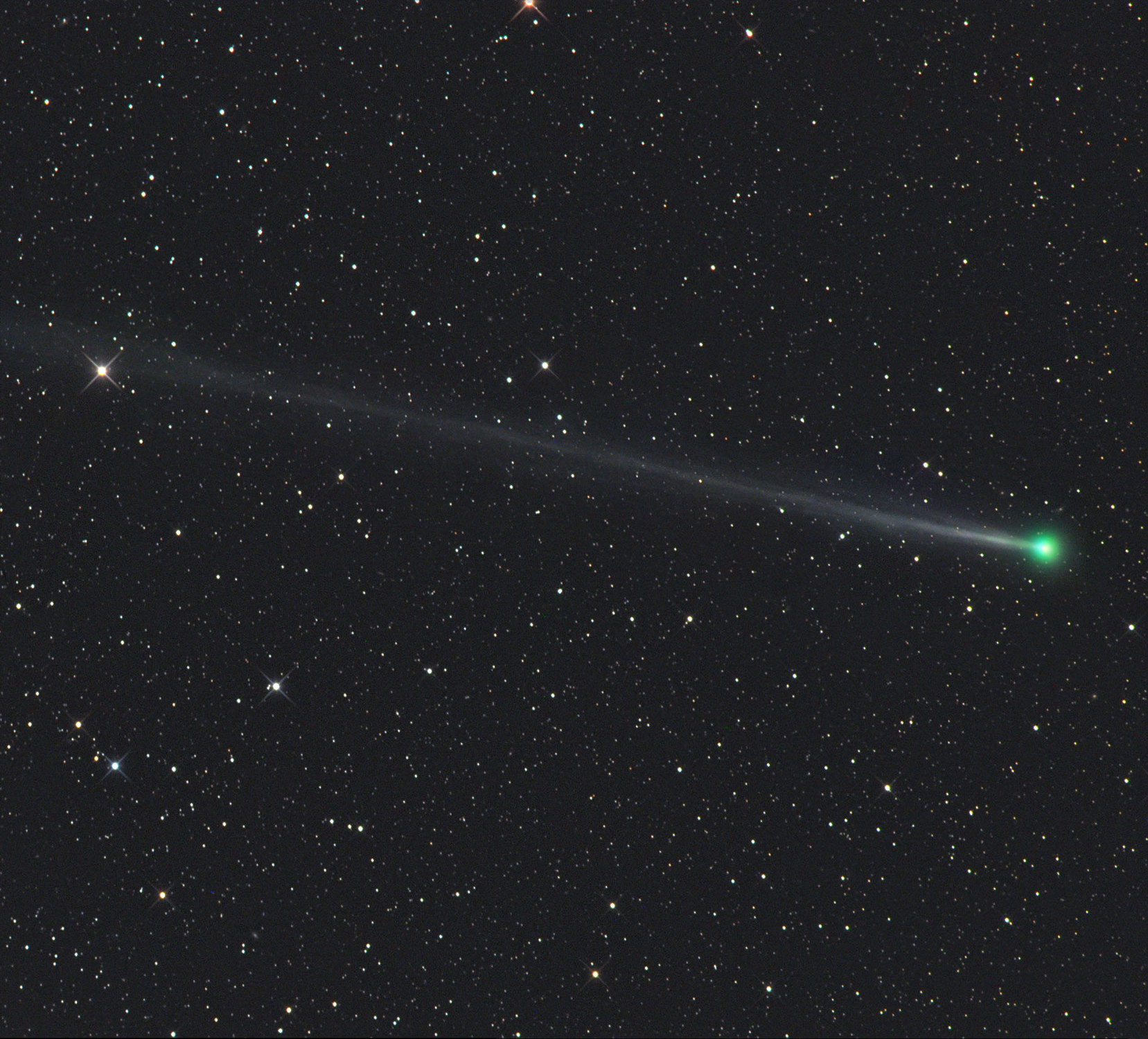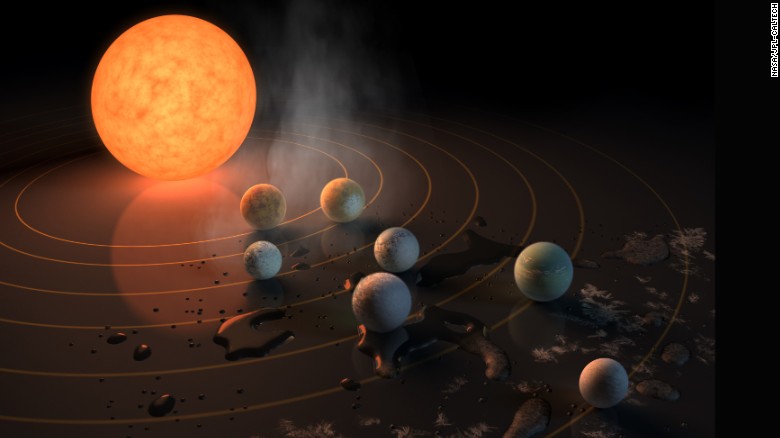Those are the guys who rewired Bannon's brain. They're stopping by to correct a few mistakes.
On the serious side, I don't know, but it is intriguing!
 |
 |
|
|||||||||||
 |
 |
||||||||||||
|
|
|
|
|
|
|
||||||||
 |
|
|
|
|
|
 |
|||||||
|
|
|
|
|||||||||||
|
|
|||||||||||||
|
|
|
|
|
|
|
|
|
|
|
|
|
|
|
Results 511 to 520 of 679
-
02-18-2017, 03:31 PM #511
Last edited by ilan; 02-18-2017 at 03:34 PM.
Beginner's Guide for Rocket, NFPS and IKS66...
http://iptvtalk.net/showthread.php?2...-you-should-do
Kodi Options for Rocket, NFPS and IKS66...
http://iptvtalk.net/forumdisplay.php?71-Kodi
Check the Announcement Section...
http://iptvtalk.net/forumdisplay.php...-Announcements
-
02-18-2017, 09:33 PM #512
-
02-19-2017, 06:54 PM #513The Most Amazing Space Photos This Week!
SPACE.com Staff | February 18, 2017

This image captures Comet 45P/Honda-Mrkos-Pajdušáková as it streaks across Earth's sky.
Credit: Gerald Rhemann
"Observing a comet multiple times over successive orbits is like taking snapshots at different stages of life," Joseph Nuth, a senior scientist at NASA's Goddard Space Flight Center, said in the statement. "And some comets have harder lives than others, depending on how close they get to the sun. We can learn about these effects by comparing different comets with varying perihelion distances over time." (Perihelion refers to the point in the comet's orbit when it's closest to the sun.)
In the nearer future, Comet 41P/Tuttle-Giacobini-Kresak will fly by Earth on April 1, 2017, followed by Comet 46P/Wirtanen on Dec. 16, 2018. Astronomers can learn more about Comets 45P, 41P and 46P by studying the differences between them, NASA officials said.
"Comet 46P, in particular, will remain within 10 million miles [16 million km] of Earth for several weeks, from December 4 through 28, 2018," Michael DiSanti, a researcher at the Goddard Space Flight Center, said in the statement. "This will permit detailed studies of its material, as successive regions of the comet's nucleus become exposed to sunlight."
Comet 45P will still be visible through telescopes or binoculars for a few more days as it travels away from Earth and farther out into space. You can see more photos of the beautiful comet flyby (and the penumbral eclipse) on Space . com.Beginner's Guide for Rocket, NFPS and IKS66...
http://iptvtalk.net/showthread.php?2...-you-should-do
Kodi Options for Rocket, NFPS and IKS66...
http://iptvtalk.net/forumdisplay.php?71-Kodi
Check the Announcement Section...
http://iptvtalk.net/forumdisplay.php...-Announcements
-
02-20-2017, 06:20 PM #514Astronomers Use ALMA to Hunt for Universe’s Oldest Light
Sci News Staff | 20 February 2017
The events surrounding the Big Bang were so cataclysmic that they left an indelible imprint on the fabric of the cosmos.
Astronomers combined data from ALMA’s 7- and 12-m antennas to produce the sharpest possible image of RX J1347.5–1145, the center of which shows up here in the dark ‘hole’ in the ALMA observations. The energy distribution of the CMB photons shifts and appears as a temperature decrease at the wavelength observed by ALMA, hence a dark patch is observed in this image at the location of the cluster. The optical image of RX J1347.5–1145 was taken with Hubble. Image credit: NASA / ESA / Hubble / T. Kitayama, Toho University / ALMA.
Astronomers can detect these scars today by observing the oldest light in the Universe.
As it was created nearly 14 billion years ago, this light — which exists now as weak microwave radiation and is thus named the cosmic microwave background (CMB) — has now expanded to permeate the entire cosmos, filling it with detectable photons.
The CMB can be used to probe the cosmos via the SZE, which was first observed in 1983.
Scientists detect the CMB here on Earth when its constituent microwave photons travel to our planet through space.
On their journey to Earth, they can pass through galaxy clusters that contain high-energy electrons. These electrons give the photons a tiny boost of energy.
Detecting these boosted photons through our telescopes is challenging but important — they can help astronomers to understand some of the fundamental properties of the Universe, such as the location and distribution of dense galaxy clusters.
The NASA/ESA Hubble Space Telescope observed RX J1347.5–1145, a giant cluster of galaxies approximately 5 billion light-years from Earth, as part of the Cluster Lensing And Supernova survey with Hubble.
This observation helped the Atacama Large Millimeter/submillimeter Array (ALMA) to study the CMB using the thermal SZE (blue-purple hues).Beginner's Guide for Rocket, NFPS and IKS66...
http://iptvtalk.net/showthread.php?2...-you-should-do
Kodi Options for Rocket, NFPS and IKS66...
http://iptvtalk.net/forumdisplay.php?71-Kodi
Check the Announcement Section...
http://iptvtalk.net/forumdisplay.php...-Announcements
-
02-21-2017, 02:56 PM #515
great stuff guys always happy to click here
-
02-21-2017, 08:35 PM #516Brightest, farthest pulsar found!
Deborah Byrd in Space | February 21, 2017
In one second, this distant pulsar – the spinning remains of a once-massive star – emits the same amount of energy as that released by our sun in 3.5 years.

NGC 5907 X-1: record-breaking pulsar. Image via ESA.
The European Space Agency (ESA) said this morning (February 21, 2017) that an object identified by its XMM-Newton space observatory turns out to be a pulsar – a rapidly spinning, extremely dense star – pulsing about once a second. This pulsar -known as NGC 5907 X-1 – appears to be a thousand times brighter than previously thought possible. If so, the pulsar is not only the brightest pulsar; it’s also the most distant pulsar of its kind ever detected, with its light traveling 50 million light-years to Earth’s vicinity.
This very bright X-ray source appears to be 10 times brighter than the previous record holder. In one second, it appears to emit the same amount of energy as that released by our sun in 3.5 years. Gian Luca Israel of INAF-Osservatorio Astronomica di Roma, Italy is lead author of the paper describing the result published in the peer-reviewed journal Science this week. He said in a statement:
Before, it was believed that only black holes at least 10 times more massive than our sun feeding off their stellar companions could achieve such extraordinary luminosities, but the rapid and regular pulsations of this source are the fingerprints of neutron stars and clearly distinguish them from black holes.
Only a neutron star is compact enough to keep itself together while rotating so fast.
ESA explained the connection between pulsars and neutron stars this way:
Pulsars are spinning, magnetized neutron stars that sweep regular pulses of radiation in two symmetrical beams across the cosmos. If suitably aligned with Earth these beams are like a lighthouse beacon appearing to flash on and off as it rotates. They were once massive stars that exploded as a powerful supernova at the end of their natural life, before becoming small and extraordinarily dense stellar corpses.
ESA explained that its XMM-Newton has observed this object several times in the past 13 years, and that the discovery it is a pulsar was the result of a systematic search for pulsars in the data archive. The signal was also identified in NASA’s Nustar archive data, providing additional information. The archival data revealed that the pulsar’s spin rate has changed over time, from 1.43 seconds per rotation in 2003 to 1.13 seconds in 2014. The same relative acceleration in Earth’s rotation would shorten a day by five hours in the same time span. ESA said:
Although it is not unusual for the rotation rate of a neutron star to change, the high rate of change in this case is likely linked to the object rapidly consuming mass from a companion.
If that’s so, Luca said:
This object is really challenging our current understanding of the ‘accretion’ process for high-luminosity stars. It is 1,000 times more luminous than the maximum thought possible for an accreting neutron star, so something else is needed in our models in order to account for the enormous amount of energy released by the object.
The scientists think there must be a strong, complex magnetic field close to the star’s surface. In that scenario, accretion onto the neutron star surface would still be possible, while the pulsar continues to generate its high luminosity.
Bottom line: The pulsar known as NGC 5907 X-1 is not only the brightest pulsar; it is also the most distant pulsar of its kind ever detected, with its light traveling 50 million light-years to Earth’s vicinity.
The jets that spring from pulsars and create their powerful pulses aren’t just theoretical; they’ve been observed. This deep image from NASA’s Chandra X-ray Observatory shows the Vela pulsar, about 1,000 light years from Earth, with a fast-moving jet of particles produced by the pulsar visible on the right. This pulsar makes about 11 rotations every second. As the pulsar spins, it spews out a jet of charged particles that race out along the pulsar’s rotation axis at about 70% of the speed of light. It’s when pulsar jets are aligned toward Earth that we see the powerful pulses of a pulsar. Image via Chandra.Beginner's Guide for Rocket, NFPS and IKS66...
http://iptvtalk.net/showthread.php?2...-you-should-do
Kodi Options for Rocket, NFPS and IKS66...
http://iptvtalk.net/forumdisplay.php?71-Kodi
Check the Announcement Section...
http://iptvtalk.net/forumdisplay.php...-Announcements
-
02-24-2017, 06:10 PM #517Astronomers discover 7 Earth-sized planets orbiting nearby star
Ashley Strickland, CNN | 22 February 2017

(CNN) Astronomers have found at least seven Earth-sized planets orbiting the same star 40 light-years away, according to a study published Wednesday in the journal Nature. The findings were also announced at a news conference at NASA Headquarters in Washington. This discovery outside of our solar system is rare because the planets have the winning combination of being similar in size to Earth and being all temperate, meaning they could have water on their surfaces and potentially support life.
"This is the first time that so many planets of this kind are found around the same star," said Michaël Gillon, lead study author and astronomer at the University of Liège in Belgium.
The seven exoplanets were all found in tight formation around an ultracool dwarf star called TRAPPIST-1. Estimates of their mass also indicate that they are rocky planets, rather than being gaseous like Jupiter. Three planets are in the habitable zone of the star, known as TRAPPIST-1e, f and g, and may even have oceans on the surface.Beginner's Guide for Rocket, NFPS and IKS66...
http://iptvtalk.net/showthread.php?2...-you-should-do
Kodi Options for Rocket, NFPS and IKS66...
http://iptvtalk.net/forumdisplay.php?71-Kodi
Check the Announcement Section...
http://iptvtalk.net/forumdisplay.php...-Announcements
-
02-24-2017, 09:20 PM #518Pinball Wizard












- Join Date
- Nov 2014
- Location
- yes
- Posts
- 9,529
- Rep Power
- 293
I have been reading about this and it is so fascinating, hopefully there will more news on these soon!! Thanks Ilan!!
-
02-24-2017, 09:42 PM #519
Maybe someone there is posting about our solar system right now, wondering if there is any intelligent life. I guess we here wonder that too
 Beginner's Guide for Rocket, NFPS and IKS66...
Beginner's Guide for Rocket, NFPS and IKS66...
http://iptvtalk.net/showthread.php?2...-you-should-do
Kodi Options for Rocket, NFPS and IKS66...
http://iptvtalk.net/forumdisplay.php?71-Kodi
Check the Announcement Section...
http://iptvtalk.net/forumdisplay.php...-Announcements
-
02-24-2017, 09:56 PM #520
3 planets in the "Goldilocks zone" is pretty good odds .... wow !!
I must not forget, we must not forget, that we are human beings.
- Ren
Similar Threads
-
RCU model pics
By crazed 9.6 in forum BuzzTV RemotesReplies: 25Last Post: 01-05-2024, 10:41 PM -
BuzzTV e1 - pics
By Ryu in forum BuzzTV EssentialsReplies: 0Last Post: 02-01-2021, 01:06 AM -
Zx Pics
By Capt.Kangaroo in forum Formuler ZxReplies: 17Last Post: 09-21-2018, 02:38 PM -
This is cool pics
By Marley in forum Chit Chat LoungeReplies: 0Last Post: 03-06-2018, 06:41 PM -
Space Pics v.3
By Capt.Kangaroo in forum Deep SpaceReplies: 527Last Post: 05-25-2016, 02:09 PM




 Reply With Quote
Reply With Quote





